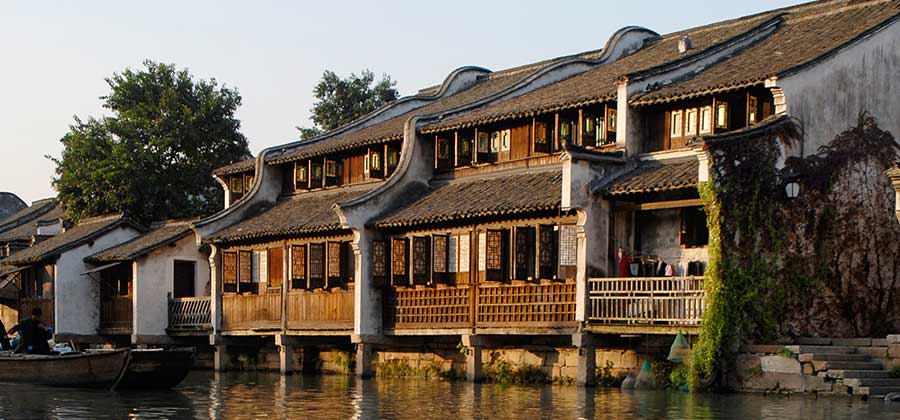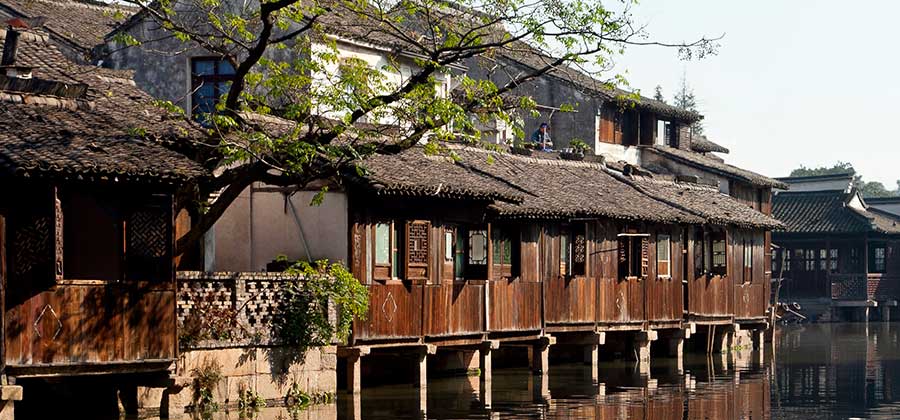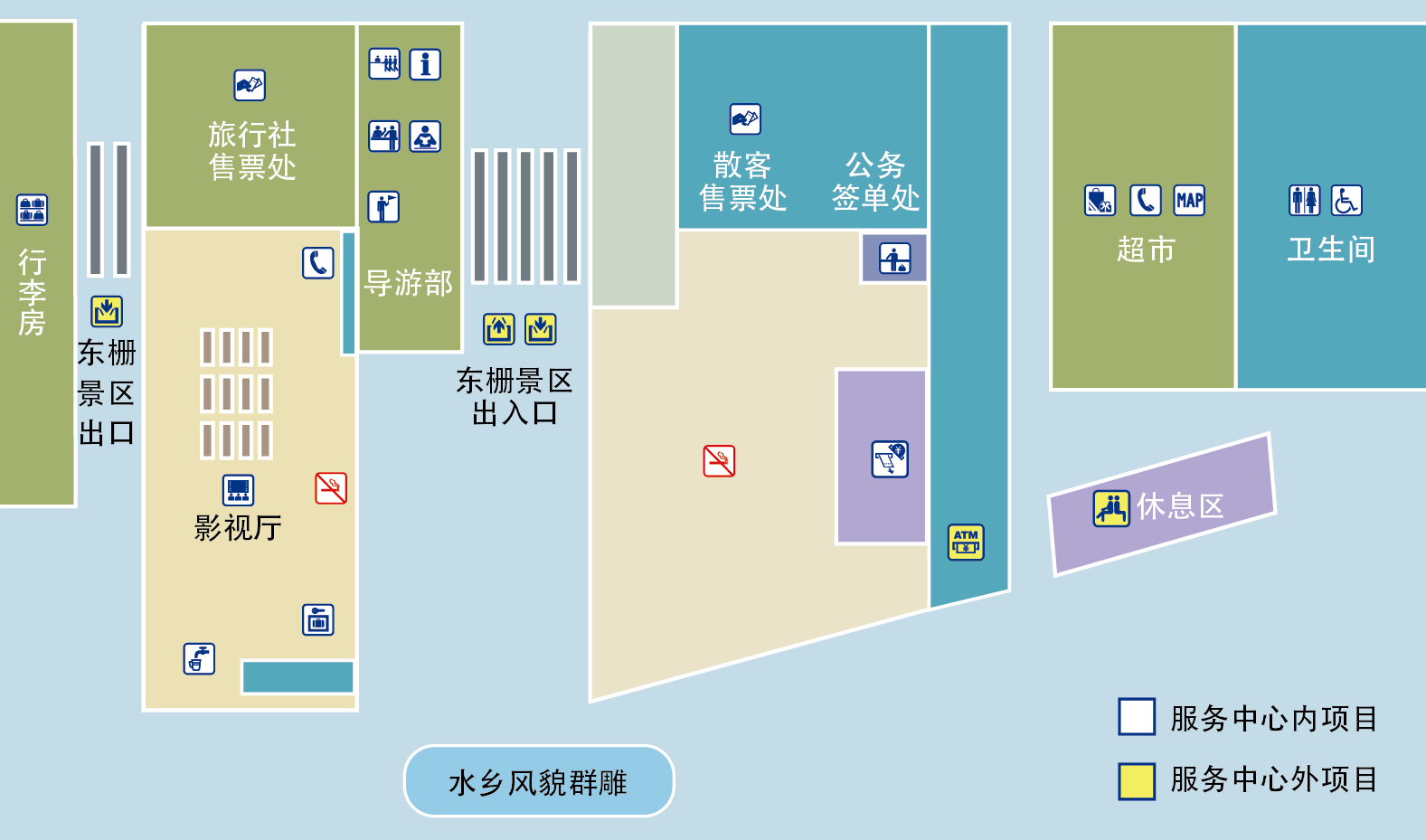

Origin of Wuzhen Water Pavilion

There is a small story in Wuzhen: There used to be a tofu shop on the lower bank of the river near the Fulan Bridge in Nanzha, Wuzhen. There was only one storefront and was small. When a pair of stone mill of grinding tofu s and a stone jar soaked in soybeans were placed, the storefront became too narrow to turn around. The tofu waiter was prepared to expand the storefront a bit, but there was a street in front that it could not be extended, and there were other shops on the left and right. After thinking about it, there was space only on the river in the back, so he built a few stakes on the riverbed behind the store, erected beams, nailed several boards to the beams, and built an attic. He moved the soybean jars and some miscellaneous items there, making the storeroom much wider.
The news spread very quickly in the small town. As soon as the attic of Tofu maker was built, the town inspector sent someone to inquire. He warned: “This is the official river, and the government has already announced that it was not allowed to occupy the river surface privately. You must demolish it within three days, otherwise you will be sent to the government for investigation!”
When he heard that he was going to the Yamen, Tofu maker panicked. In desperation, he invited the poor scholar in this street to help him. He told Tofu Xian: “I will write a note for you. If the government summons you to court, you will say that you are not guilty, and hand him this note.”

A few days later, the official saw that the water pavilion had not been dismantled, so he took the owner to see the inspector.
The patrol inspector asked, “How dare you occupy the river privately, obstruct traffic, and make vessels difficult to pass by. Do you confess?" The man answered, "No, I’m not guilty. Distinguished officer, please take a look at this note." Then he unfold the paper that scholar had written to him and sent it to the inspector. When the inspector looked at it, he immediately frowned and was speechless. Finally, he had to acknowledge that the owner was not guilty and let him go back.
At that time, the river in the north of Wuzhen was relatively narrow and could only let two boats pass through. For this reason, the county government had issued a notice forbidding the occupation of the river. However, in order to berth the official ship, the patrol master built a wide stone bank, which made the river narrow to the point where even two boats could hardly pass by. However, the town river near the Fulan Bridge in South Street, Wuzhen was wider than any other part of the river. In this area, five or six boats can go side by side. Even if some water pavilions were set up, they will not hinder the traffic. Scholar Zhang wrote in the paper that "When a civilian occupies the river, five boats can move in parallel; when an officer occupies the river, two boats can hardly go together. Who is the trouble?" The inspector knew his own fault, so he had to announce the tofu shop keeper was innocent. After that, other shop owners in the neighborhoods followed to build more water pavilions on the river, which gradually became Wuzhen's unique landscape.

A few days later, the messenger saw that the tofu maker's water pavilions had not been demolished, so he was sent to see the inspection master.
The inspection master knocked his judge's gavel, "Occupying the official river, obstructing traffic, and making it difficult for boats to travel, what should be the crime? " The tofu maker replied, "I'm not guilty. If you don't believe me, please check." He then presented the note written by scholar Zhang. Upon seeing it, the inspection master furrowed his brows and remained silent. Finally, he judged the tofu maker innocent and let him go back.
At that time, the Beishi River in Wuzhen was relatively narrow and only two boats could pass through. Therefore, the county government issued a notice prohibiting the occupation of the official river. However, the inspection master built a wide stone bank to dock with the official boats, making the river too narrow for even two boats to cross. However, the city river near the Fulan Bridge in Wuzhen's South Gate, where Tofu maker was located, was wider than other places, and five or six boats could also run parallel. Even if some water pavilions were built, it would not hinder transportation. School Zhang wrote on the paper: "The people occupy the official river with five boats running parallel, while the officials occupy the official river. The two boats are difficult to navigate, and whoever hinders traffic will be clear to the master." The inspection master knew he was wrong, so he had to acquit the tofu maker. Afterwards, the surrounding neighborhoods followed suit, and there were more water pavilions on the river, gradually becoming a unique landscape of Wuzhen.
The "water pavilion" on the river had gradually increased and became a unique beauty of Wuzhen. The clear water was winding, the small bridge cast a shadow, and there is the sound of the oars, and a scroll of water pavilions unfolds slowly. Seeing the people in the water town living in the Water pavilion, and istening to the voices of the people in the ancient town one after another, the water pavilion in Wuzhen is being loved by more and more people with its unique charm.
In 2007, the water pavilion and ancient residential buildings in Wuzhen, as typical representatives of the living art in Jiangnan water towns, were listed in the provincial intangible cultural heritage list of Zhejiang Province.
Keyword: Wuzhen’s Water Pavilions

